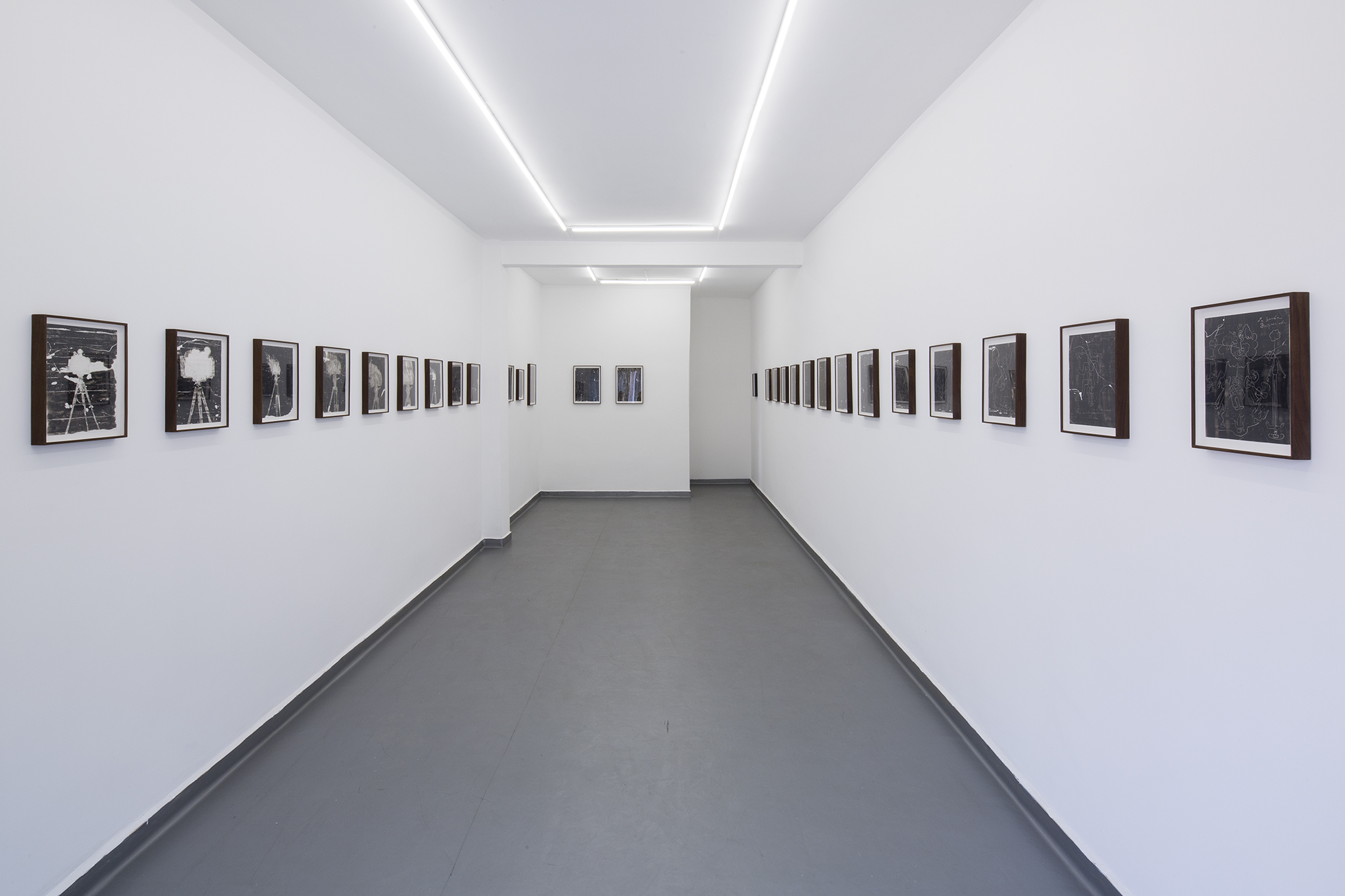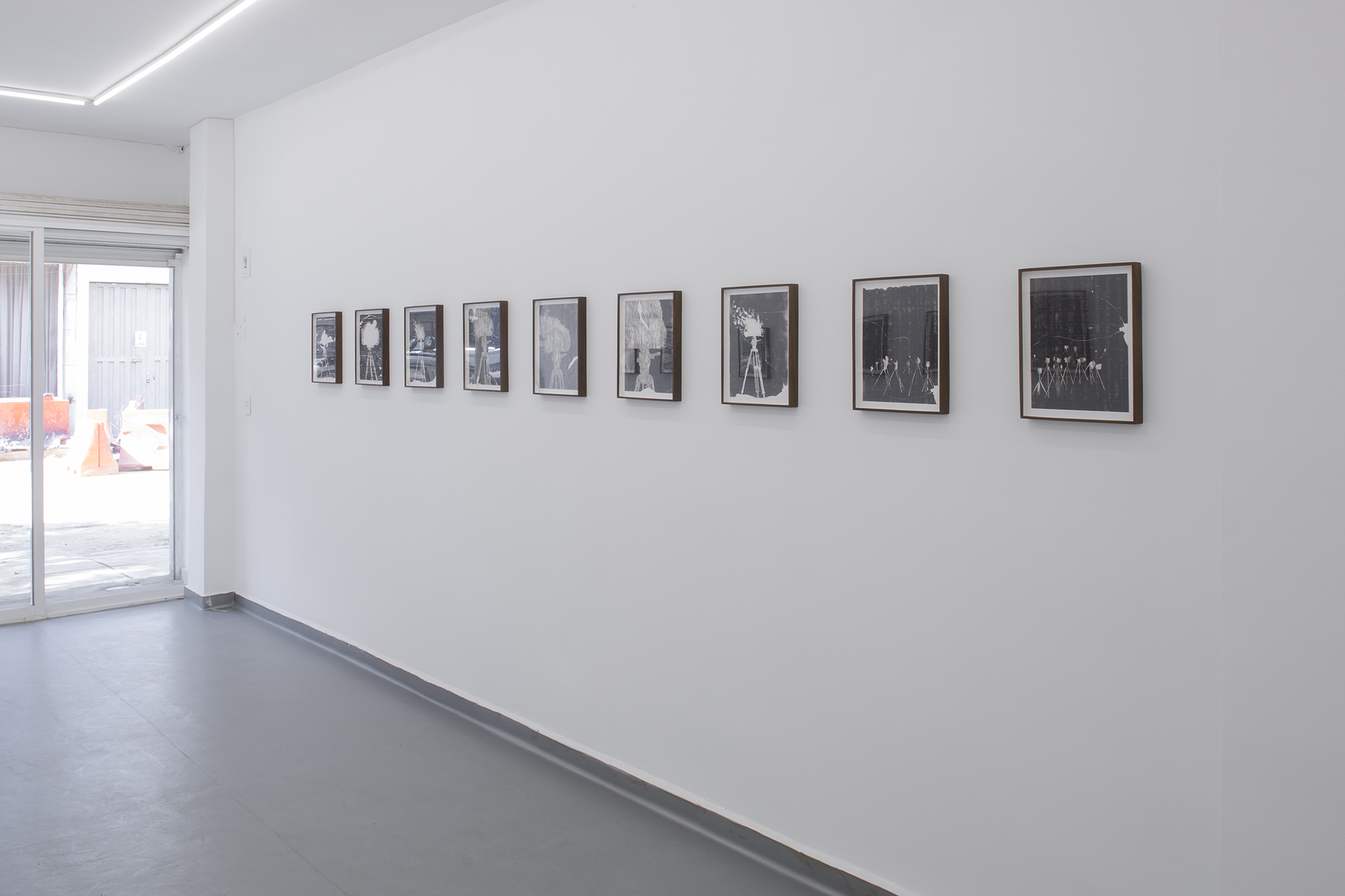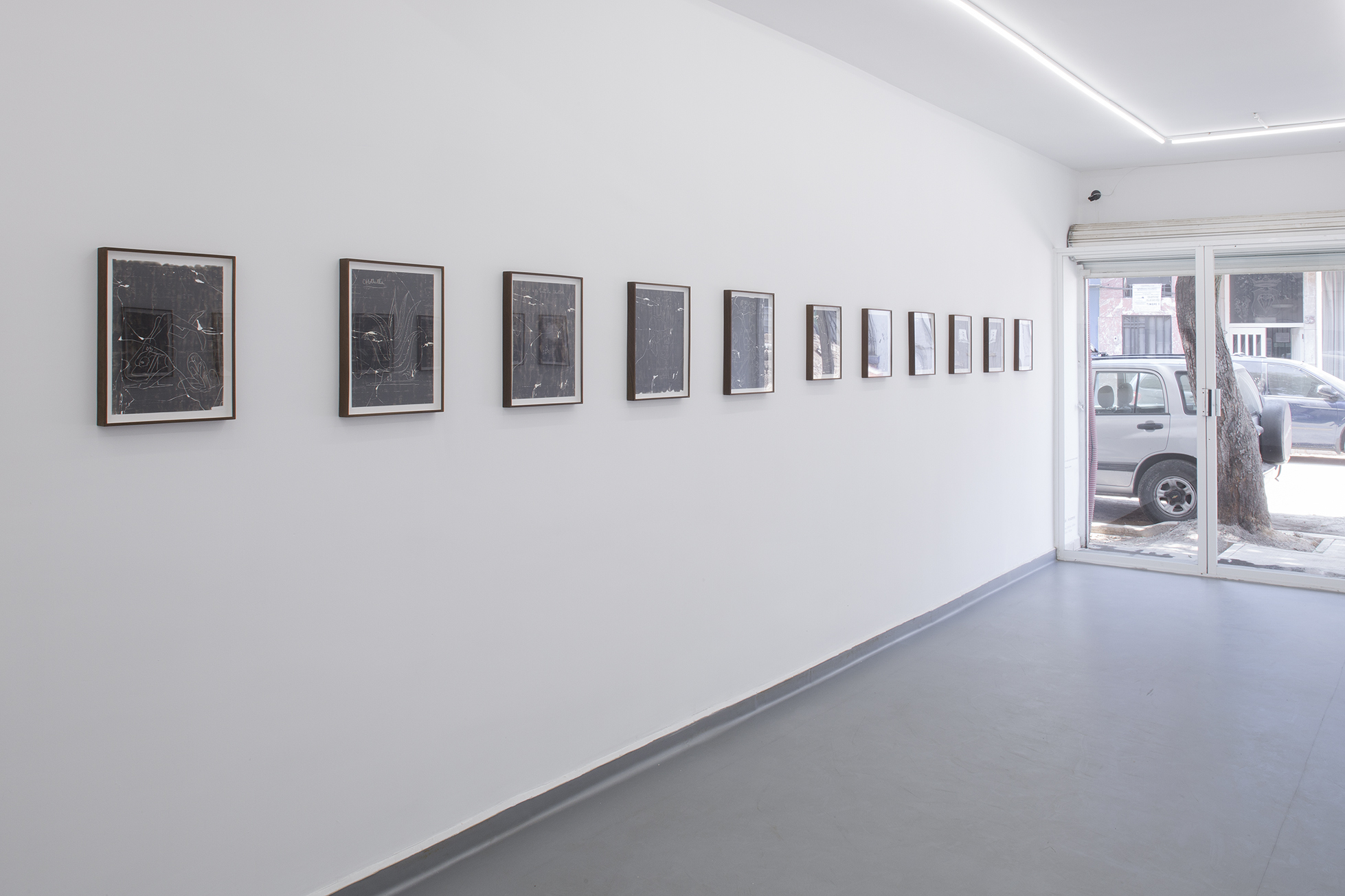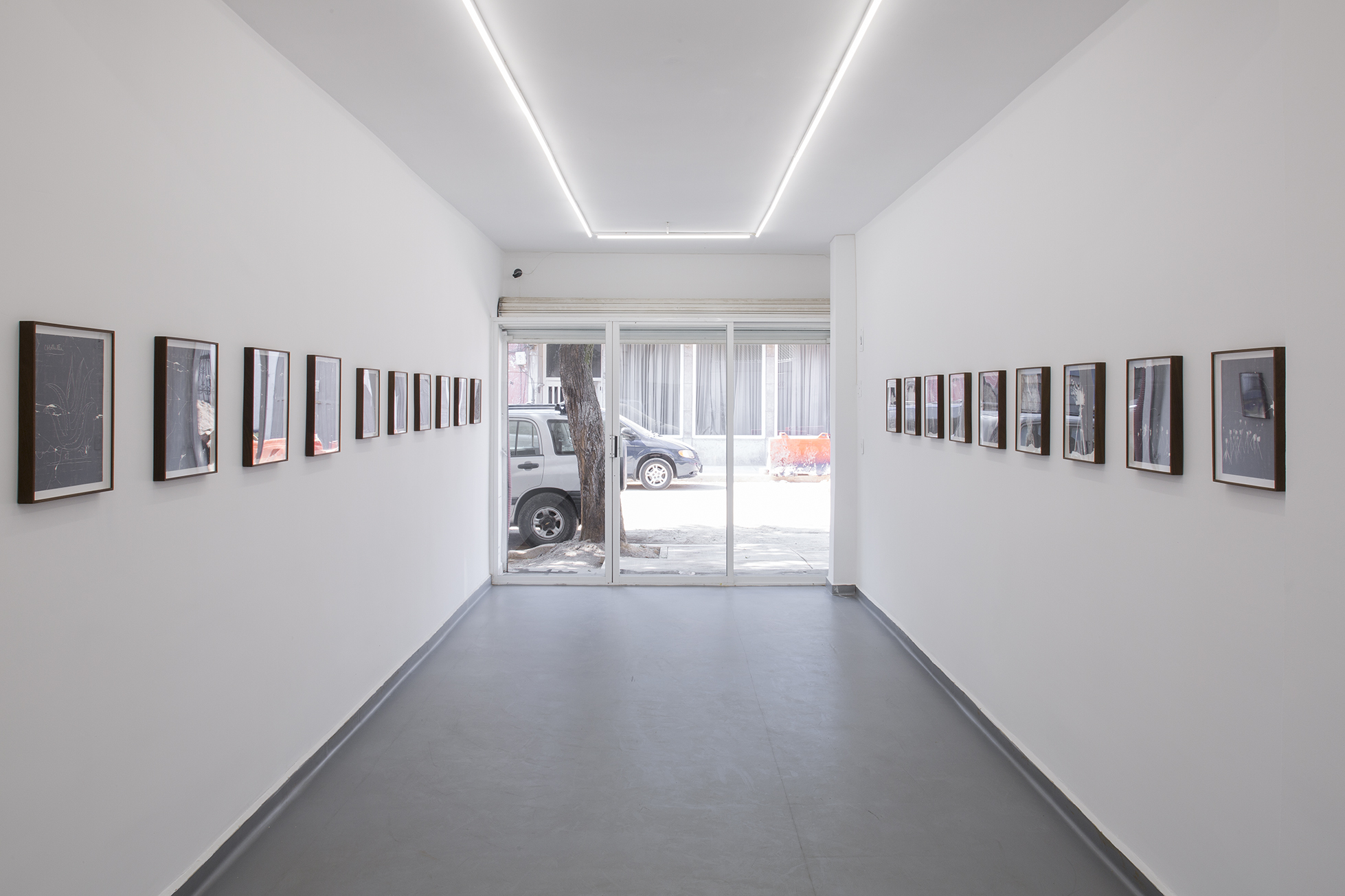"How I learned to steal (A chapter on my drawing lessons)".
Daniel Monroy Cuevas

An eyeless king clings to a miniature airplane-shaped censer as he presides over a strange ceremony: the pact between a chameleon and a woman mounted on top of a rabbit, both encircled by an altar of voluptuous hands, which seem to extend organically from their bodies. In a different scene, “the cameraman’s martyrdom,” the camera assaults its operator, who remains pressed between the fierce breath of the machine and a cactus whose spines flirt dangerously with his bottom. Sergei Eisenstein’s inimitable line comprises a prolific graphic output, evident in the hundreds of drawings now housed in private collections and archives around the world. The scenes that appear in Daniel Monroy Cuevas’ work emerged during Eisenstein’s brief stay in Mexico; they belong to the drawings the filmmaker gave to his friend Gabriel Fernández Ledesma, eventually given on loan to the Cineteca Nacional film archive.
On first impression, the spontaneous and anarchic line contrasts wildly with the sobriety of the Soviet director’s film productions: the promiscuous, unrestrained stroke breeds figures that float in a seemingly liquid space; polymorphous bodies, entangled in complicated and random situations, if not, frankly obscene ones. But they are obscene, not in the sense of indecency (although the author himself admits that on several occasions, shocked by the salaciousness of his doodles, he tore them up almost instantly). No. Obscene because they happen “off scene” with respect to everything that nurtures the myth of Eisenstein, and particularly, the myth of “Eisenstein in Mexico,” frequently associated with a generic folkloric imaginary, the chauvinistic gist of muralist art, and the masculinist nationalism of Emilio “El Indio” Fernández. Obscene, because they exist “behind” the scenes of the failed project ¡Que Viva Mexico!, as mere sketches of a dream stalled by harsh censorship and the narrow vision of the film’s financiers, chief among them, Upton Sinclair.
In Mexico, Eisenstein began to draw again after a seven-year break. And in Mexico, his drawings underwent an internal catharsis, “achieving a mathematical abstraction and the purity of line.” This land of contrasts and sensorial pleasures, which he palpated avidly “with his eyes, his hands, and the soles of his feet” infiltrated his thinking about film, prompting the most sophisticated expression of his theory of montage. The restless line of Eisenstein’s drawings attests to the filmmaker’s journey through our country; it harbors the author’s deep fascination for atavistic and animistic thought, the repository of a pre-conscious, sensory and ecstatic experience, of forms dictated by primordial drives. It also recalls his obsession with Walt Disney’s animated cartoons, which he extolled for their irreverent and anthropomorphic potency—that quality of “stable instability” that resisted, above all, “the ossification of form.” For Eisenstein, there was a far worse fate than death: inanimation. In Mexico, those drawings vanished—scorched presumably by the fire that destroyed the Cineteca Nacional archive in 1982.
Now, in the work of Daniel Monroy Cuevas, these drawings re-appear—this time as a kind of negative image, inscribed upon a dark background; a strange facsimile, traced from another facsimile, grafted from an “original” image submerged in a sea of mystery: a clue from the censored universe of cinema–“the mise-en-scène of an apocryphal memory.” If Eisenstein’s line stroke embodied a libertine spontaneity, a fugue of ecstasy, the process behind its “resurrection” in Monroy Cuevas’ work follows an inverse logic. It consists of meticulously tracing that deliberate line stroke on a glass covered with soot; stratigraphically dissecting it, then using “magic tape” to transfer it, segment by segment, onto a new surface—as if it were dead body– or rather, a body that has already endured several deaths. A forensic process: re-dramatizing the act of drawing, as one would, when dealing with a crime scene; embalming that line, born from a fortuitous gesture, in the same smoke that claimed its existence.
That dark background supplies the drawings with the dimension of time; as the footprint of a fire that erased our filmic memory, it returns “impressions of an image at the moment of its destruction.” But it also conceals a story of creation: the instant when Eisenstein discovered the power of that line that leaves no shadow, that eludes solidity, to become an engine of movement. In his memories, the filmmaker describes how as a boy, he was struck by the caricatures the engineer Afrosimov drew for him with white chalk on the dark cloth of a table set in the family’s drawing room. In those drawings, he discovered the power of the untamable form: the expression of a creative drive that is never extinguished, only propelled and transformed.
Daniel Monroy Cuevas’ works preserve this tension of opposing forces, which, for Eisenstein, constituted the essence of montage. They re-animate the stroke of that line that dispels inertia. As a “negative ‘image” of Eisenstein’s lost Mexican drawings, they install a new dialectic, between the prehistory of movement and its forgotten futures: an antidote to the ossification of cinema. After all, fire and soot always tend to spread far beyond the contour of any surface.
Mara Fortes.


